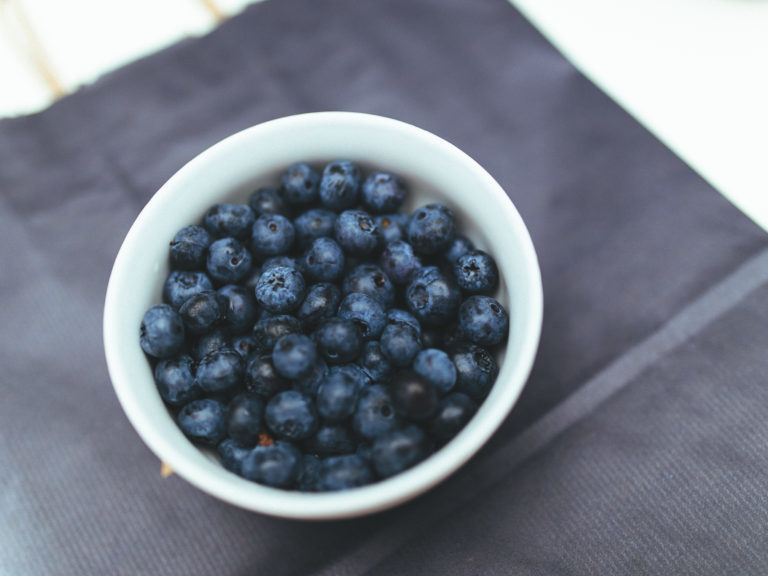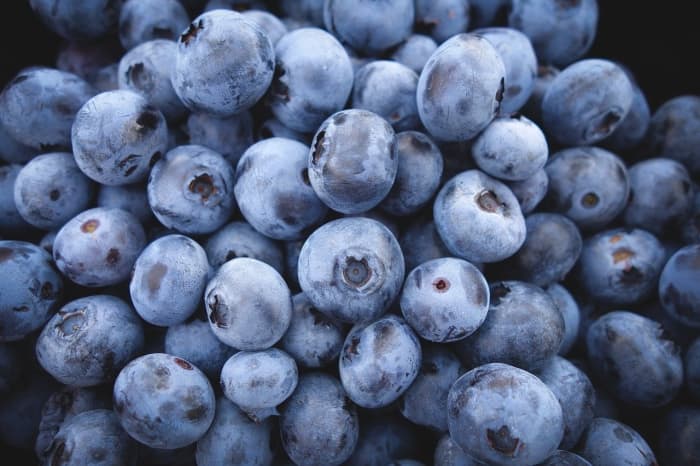How to Successfully Grow Blueberries in the South
Choosing the Right Blueberry Plants for Your Southern Garden
The rabbiteye blueberry plant is native to the American Southeast. It’s drought and heat tolerant, so it’s great for southern gardens. There are many varieties of rabbiteye blueberries.
Rabbiteye Blueberry Varieties
- Climax
- Premier
- Powderblue
- Brightwell
- Beckyblue
- Tifblue
For cross-pollination and good production, you’ll want to mix different selections from these varieties. Also, you’ll want to choose varieties that ripen at different times. See the chart below!
Ripening Order for Rabbiteye Blueberry Varieties
When choosing blueberries, choose more than one variety for cross pollination and choose according to the season of producing for a longer season.
Early SeasonMid-SeasonLate Season
When and How to Plant Blueberries
The best time to plant blueberry plants is in the late winter or early spring.
Once you have chosen your blueberry bushes, plant them in a sunny location with well-draining soil. Ideally, blueberries need full sun, but try to find a location that has at least six hours of sun. Dig holes about 20 inches deep and 18 inches wide. Add some peat moss, if necessary, to add acidity to the soil.
Transplanting Blueberries
Blueberries should be transplanted when they are dormant, i.e. they have gone through leaf drop and no new growth is evident. This is usually in the early fall after the first frost or in the spring after the worst of the frosts have passed. Blueberry transplants can survive a light frost but should not be exposed to heavy frosts.
Before transplanting is a good time to add to the acidity of the soil. Blueberry plants need acidic soil with a pH of 4.2–5.0 and full sun. Add some composted pine bark, sawdust, or peat moss to the soil and mulch with pine straw.
When and How to Fertilize Blueberry Bushes
Blueberries should be fertilized once a year. The best time to do this is in the spring before they begin to leaf out. Do this early enough so that the fertilizer has a chance to penetrate the soil thoroughly before they begin producing.
Blueberry plants need acidic soil to grow properly, so choose a fertilizer with a higher acidic level (lower phosphate). To determine the pH level of your soil, send a sample of the soil from the area you plant to a local laboratory for testing.
In the United States, soil tests can be obtained at universities’ agricultural extension services for a fee. This is the easiest and probably the most reliable way to do this, but you can also purchase a soil test kit at your local garden supply center and follow directions on the kit to complete the test.
When you are ready to add fertilizer to blueberries, look for a fertilizer that contains ammonium sulfate or sulfur-coated urea and is higher in nitrogen.
How to Mulch Blueberries
Rabbiteye blueberries have very shallow root systems. So mulching the plants is very important to help them compete with the weeds and conserve moisture for their shallow roots. The plants should be mulched before winter begins to protect them from the cold temperatures.
Since blueberries need acidic soil, the best mulch to use is hemlock, pine, fir needles, or sawdust. This type of plant has a slightly acidic nature and will help maintain the acidic soil for the blueberries.
Pile the mulch around the plants about 3 inches thick and extend out 2 feet from the center.
Replenish the mulch each spring before the growing season begins.
When and How to Prune Blueberries
Blueberry plants can be pruned from November until March. The best time to prune is in February or early March. If blueberries are not pruned, they will become overgrown and unproductive. During the first two years of growth, prune regularly to properly shape the plants.
Blueberries grow on the side shoots of the main branches. Only branches that are at least one year old will produce fruit, and after four years the productivity of the branches lessens. Prune the branches each year so they have enough new growth for next year’s season.
Remove crossed branches in the first two years of growth so the canes will be stronger and straighter. The goal is to get the branches to grow straight up and create a better-shaped bush. Thin out the middle of the blueberry plants so they can get enough airflow. Remove the shorter, less vigorous branches and leave the taller, stronger ones. You can shorten these taller, stronger branches to shape the plant if necessary.
To help the plants branch out, cut the longest branches back to two-thirds of their height. Remove any branches that look shriveled or discolored, indicating disease.
Picking, Preserving, and Freezing Blueberries
Rabbiteye blueberries need to ripen on the bush, so don’t pick them too soon. Wait until they are completely ripe. The berries start out green, then turn pink, then purple, before turning deep blue with a frosty look. It is when they turn this deep blue that they are ready to pick.
After picking, they can be preserved by freezing or making into your favorite jams or preserves. Blueberries are super easy to freeze for later use. Put some parchment paper on a baking sheet and spread the freshly picked berries out in a single layer.
Don’t rinse your berries at this point. Sort through the berries removing any debris or leaves or smashed berries. Place in the freezer to freeze berries. Rinse the blueberries thoroughly once they are taken out of the freezer bags to be used in recipes.
Once the berries have frozen, remove them from the freezer and store them in freezer bags. Label each bag with the number of cups of blueberries included and return them to the freezer for future use in recipes.
When you remove the blueberries from the freezer to use in recipes, rinse berries thoroughly before use.
In addition to freezing, you can also easily can your blueberries or make some jam or preserves. Check out the video below for instructions on making jam.
This content is accurate and true to the best of the author’s knowledge and is not meant to substitute for formal and individualized advice from a qualified professional.
© 2020 Jo Miller
Comments
Jo Miller (author) from Tennessee on November 21, 2020:
Thanks for your comment, Ann. My blueberries were not doing as well at our home here as some I’d had before which was the reason I began researching the information for this articles. Hope to do better next yeas.
Jo Miller (author) from Tennessee on November 21, 2020:
Thank you. It was information I needed to increase my production. Haven’t tried all of it yet.
Liz Westwood from UK on November 19, 2020:
Blueberries have become increasingly popular in the UK in recent years. My grandchildren love eating them. This is a very helpful and detailed article.
Marie Flint from Jacksonville, FL USA on November 18, 2020:
I love blueberries and wonder how the three bushes are doing at the Cahoon house (Jacksonville, FL). At the time, I dubbed myself “the Compost Queen.”
Lora Hollings on November 17, 2020:
This is a very thorough and excellent article on growing blueberries. I wonder if I could grow them in the Southwest? Do blueberries do well on drip irrigation? Thank you for the wonderful instructions on preserving them. I would love to have jelly made from fresh blueberries and it would be so nice to make blueberry pie or cobbler with homegrown blueberries. Thanks for sharing!
FlourishAnyway from USA on November 17, 2020:
They sure are fickle plants! I don’t have the land for them unfortunately but your instructions/tips are wonderful. You’ve also made me hungry for a blueberry pie. Luckily, I do have some frozen blueberries that my dad picked this summer and I may have to bake a pie this week!
Peggy Woods from Houston, Texas on November 17, 2020:
I wish we had room in our yard to plant blueberry bushes, but sadly, I do not. Your idea of planting different types that ripen at different times is a good tip. We love eating blueberries!
Bill Holland from Olympia, WA on November 17, 2020:
We have several blueberry bushes in our yard, and they never fail to deliver in the summer. In fact, our freezer is filled with packages of them. Yum!
Ann Carr from SW England on November 17, 2020:
I love blueberries and have tried growing them in my garden in Somerset. It didn’t work but I’ll have another go in due course. They’re so good for the health and very yummy!
Hope you’re keeping safe and well.









